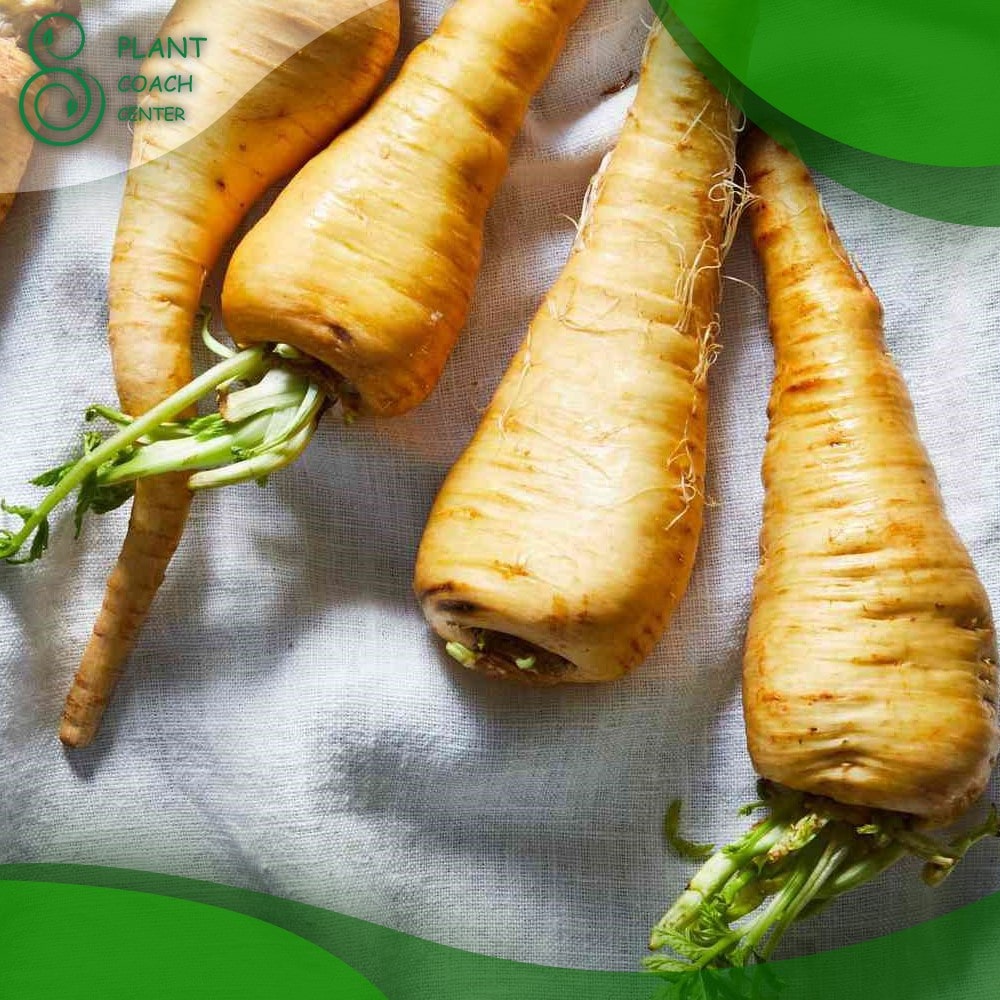When to Plant Parsley
Parsley, a versatile and popular herb, adds flavor and freshness to a wide range of dishes. When it comes to growing parsley successfully, understanding the optimal planting timing is vital for ensuring healthy growth and abundant harvests. In this comprehensive guide, we will explore the different seasons for planting parsley, factors influencing planting timing, maximizing planting success, troubleshooting common problems, advanced techniques, and the valuable role of plant coaching.
Whether you are a novice gardener or an experienced herb enthusiast, this article will provide you with the knowledge and insights to cultivate thriving parsley plants. For further information and resources related to plant coaching, you can visit plantcoachcenter.com.
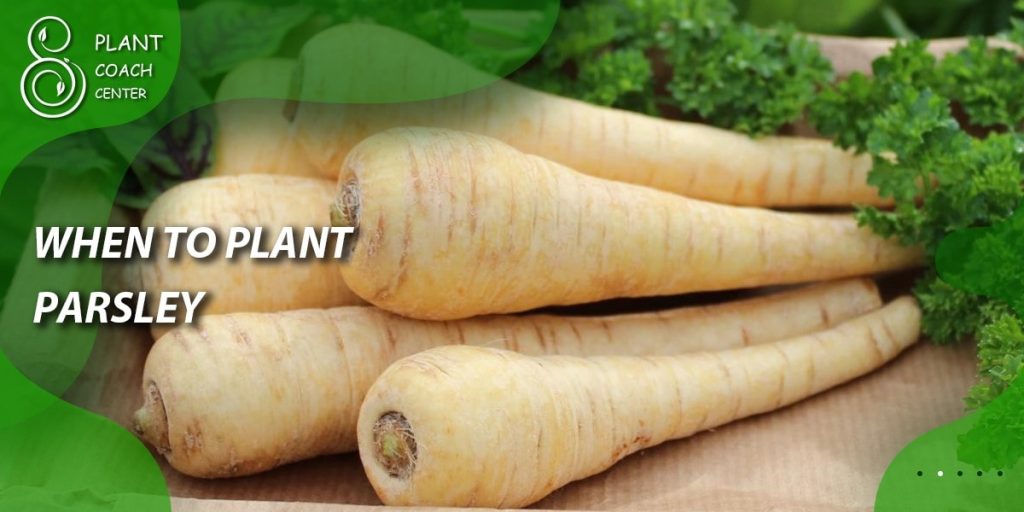
Understanding Parsley Planting Seasons
Parsley can be planted in various seasons, each offering its own advantages and considerations. Let’s explore the three primary planting seasons: spring, fall, and winter.
Spring Planting
Spring planting provides a favorable environment for parsley growth, allowing plants to establish themselves before the heat of summer arrives. Consider the following key points:
– **Benefits and Considerations**: Spring planting offers longer daylight hours, warmer temperatures, and ample moisture, which promote vigorous growth. However, it’s important to consider the risk of late frost and adjust planting times accordingly.
– **Ideal Timeframe for Spring Planting**: Aim to plant parsley seeds in early spring, once the soil has thawed and temperatures consistently reach around 50°F (10°C).
– **Soil Preparation and Site Selection**: Prepare the soil by removing weeds, loosening the soil, and incorporating organic matter. Choose a well-draining location with partial shade to protect parsley from excessive heat.
Fall Planting
Fall planting presents unique advantages, including cooler temperatures and fewer pest and disease pressures. Consider the following when planning fall parsley planting:
– **Advantages of Fall Planting**: Parsley planted in the fall benefits from cooler temperatures, resulting in slower bolting and prolonged harvests. Additionally, the reduced pest and disease activity during the fall season contributes to healthier plants.
– **Timing Fall Planting Based on Location**: Determine the average first frost date in your area and count backward to calculate the ideal planting time. Plant parsley seeds 8 to 10 weeks before the first expected frost date.
– **Preparing Soil and Site for Fall Planting**: Ensure the soil is well-drained and rich in organic matter. Clear the area of debris and weeds, and provide a layer of mulch to insulate the soil during winter.
Winter Planting
Winter planting of parsley allows for a unique gardening experience, particularly in regions with mild winters or when utilizing protective measures. Explore the following considerations for successful winter parsley planting:
– **Exploring Cold-Tolerant Varieties**: Select parsley varieties specifically bred for cold tolerance, such as “Italian Flat-Leaf” or “Hamburg” parsley. These varieties can withstand freezing temperatures more effectively.
– **Winter Planting Techniques and Considerations**: Sow parsley seeds in late summer or early fall, providing enough time for the plants to establish before winter. Utilize row covers, cloches, or cold frames to protect the plants from frost and extreme weather conditions.
– **Protecting Parsley from Harsh Winter Conditions**: Apply a layer of mulch around the plants to insulate the roots and protect them from freezing temperatures. Consider providing additional protection, such as wrapping plants in burlap or moving potted parsley indoors during severe cold snaps.
Factors Affecting Parsley Planting Timing
Several factors come into play when determining the optimal timing for planting parsley. Understanding these factors will help you make informed decisions and maximize the success of your parsley garden.
Climate and Frost Dates
The climate of your region plays a crucial role in determining the appropriate planting times for parsley. Consider the following factors related to climate:
– **Hardiness Zone**: Identify the hardiness zone of your area, which indicates the average minimum winter temperatures. Parsley is generally suitable for zones 5 to 9, but specific varieties may have different tolerances.
– **Average Frost Dates**: Determine the average last frost date in spring and the first frost date in fall. These dates serve as important guidelines for planning your parsley planting. Local gardening resources or the agricultural extension office can provide this information for your area.
Local Growing Conditions
Understanding the specific conditions in your garden or growing area allows you to tailor your parsley planting timing accordingly. Consider the following aspects:
– **Soil Temperature**: Parsley seeds germinate best when the soil temperature is around 50 to 70°F (10 to 21°C). Use a soil thermometer to monitor the temperature and ensure optimal conditions for seedling emergence.
– **Sunlight and Shade**: Parsley prefers partial shade, especially in regions with hot summers. Assess the amount of sunlight your parsley plants will receive throughout the day and select appropriate planting locations accordingly.
– **Microclimates**: Pay attention to microclimates within your garden, as certain areas may have slightly different temperature or moisture conditions. These variations can affect parsley growth and survival.
Seed Germination and Growth Rates
Understanding the germination and growth rates of parsley seeds is essential for determining when to plant and managing your expectations. Here are some key points:
– **Germination Time**: Parsley seeds typically take 2 to 4 weeks to germinate, but it can sometimes take longer. Consider this timeframe when planning your planting schedule and be patient during the germination process.
– **Growth Requirements**: Parsley grows best in cool to mild temperatures, preferring temperatures between 60 and 80°F (15 and 27°C). Ensure the growing conditions align with these preferences to promote healthy growth and development.
Maximizing Parsley Planting Success
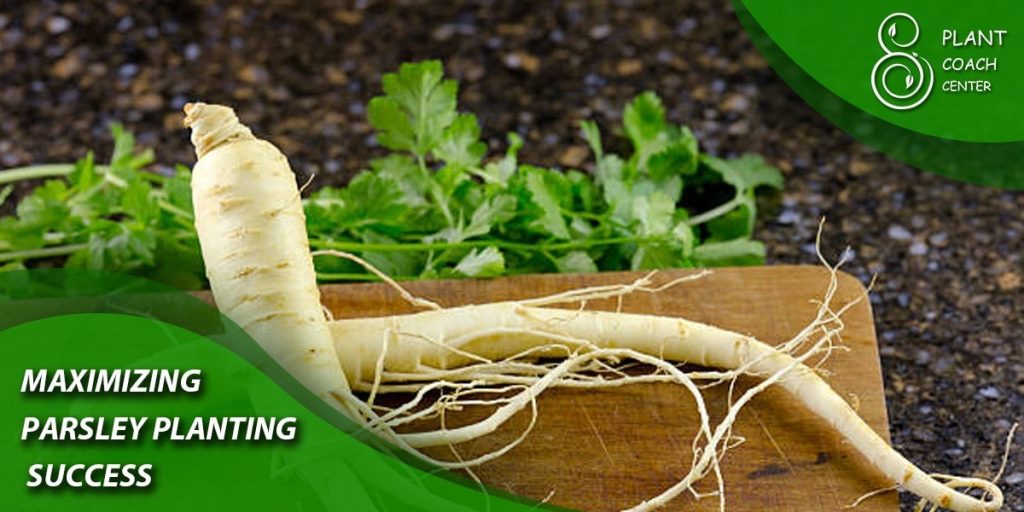
To ensure optimal growth and a bountiful harvest of parsley, it’s important to follow best practices and implement strategies that maximize planting success. Pay attention to the following aspects to create an ideal environment for your parsley plants:
Seed Selection and Preparation
Choosing high-quality parsley seeds is the first step toward a successful planting. Consider these tips for seed selection and preparation:
– **Purchase from reputable sources**: Obtain seeds from trusted suppliers or reputable nurseries to ensure their quality and viability.
– **Seed viability**: Check the seed packet for the “packed for” or “use by” date to ensure freshness and viability. Fresh seeds have a higher germination rate.
– **Seed soaking**: Soaking parsley seeds overnight or for a few hours before planting can help speed up germination. Place the seeds in lukewarm water and allow them to absorb moisture.
Soil Preparation and Amendments
Preparing the soil properly and providing the necessary amendments will create a favorable growing environment for parsley. Consider the following steps:
– **Loosen the soil**: Use a garden fork or tiller to loosen compacted soil, promoting root penetration and drainage.
– **Organic matter**: Incorporate well-rotted compost or aged manure into the soil to improve its structure, moisture retention, and nutrient content.
– **pH level**: Parsley thrives in slightly acidic to neutral soil, with a pH level between 6.0 and 7.0. Test your soil and amend it if necessary to achieve the ideal pH range.
Planting Techniques and Spacing
Proper planting techniques and spacing ensure that parsley plants have enough room to grow and access essential resources. Follow these guidelines:
– **Direct sowing**: Parsley can be directly sown into the garden bed or started indoors and transplanted later. Direct sowing is recommended for most situations.
– **Seed depth**: Plant parsley seeds about 1/4 to 1/2 inch (6 to 12 mm) deep in the soil. Lightly cover the seeds with soil and gently firm them in.
– **Spacing**: Allow approximately 6 to 8 inches (15 to 20 cm) between plants to provide adequate airflow and room for growth. Thin seedlings if they become overcrowded.
Watering and Irrigation Strategies
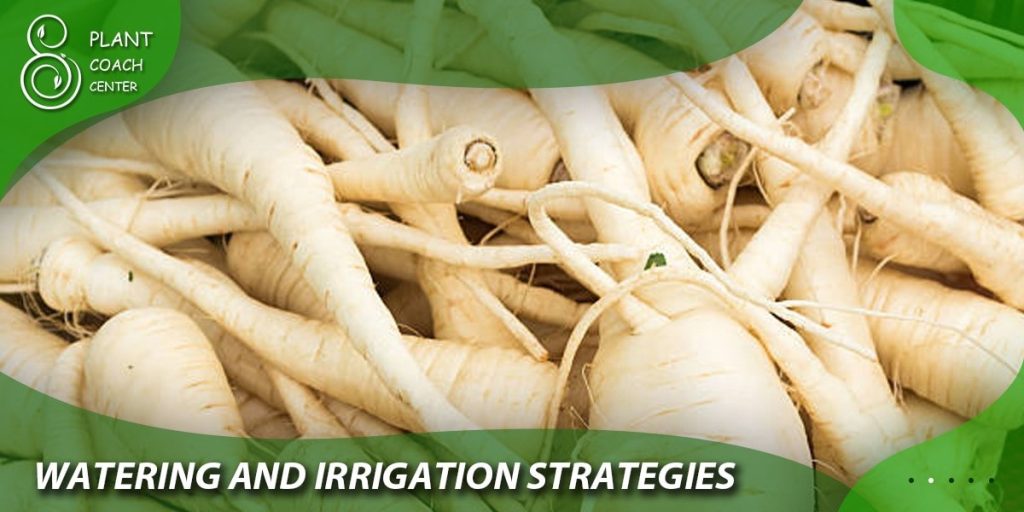
Proper watering is crucial for parsley plants, as they require consistent moisture without becoming waterlogged. Follow these watering and irrigation strategies:
– **Even moisture**: Keep the soil evenly moist, but not saturated, throughout the growing season. Avoid allowing the soil to dry out completely between waterings.
– **Mulching**: Apply a layer of organic mulch around the plants to conserve moisture, suppress weeds, and regulate soil temperature.
Nutrient Management and Fertilization
Providing the right nutrients at the appropriate times supports healthy parsley growth. Consider these tips for nutrient management:
– **Organic fertilizers**: Use organic fertilizers, such as compost or well-balanced organic granular fertilizers, to provide a slow-release source of nutrients.
– **Feeding schedule**: Apply fertilizer to parsley plants once every 4 to 6 weeks during the growing season, following the package instructions for application rates.
Pest and Disease Prevention
Protecting parsley plants from common pests and diseases is essential for their overall health and productivity. Implement these preventive measures:
– **Companion planting**: Interplant parsley with companion plants, such as marigolds or chives, to repel pests naturally.
– **Regular inspections**: Monitor your parsley plants regularly for signs of pests or diseases. Early detection allows for prompt intervention.
– **Organic pest control**: Utilize organic pest control methods, such as handpicking pests, applying insecticidal soap, or using neem oil sprays, to minimize damage.
Troubleshooting Common Parsley Problems
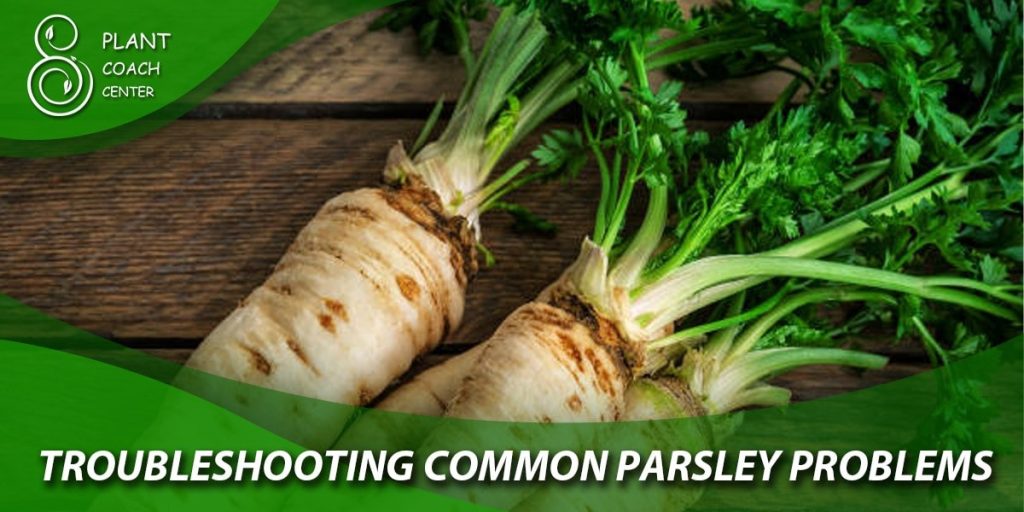
While parsley is generally a resilient herb, it can encounter various issues that affect its growth and overall health. By identifying and addressing common problems promptly, you can ensure the success of your parsley plants. Here are some troubleshooting tips:
Slow Germination or Poor Seedling Growth
– **Solution**: Ensure that the soil temperature is within the optimal range of 50 to 70°F (10 to 21°C) for parsley seed germination. Maintain consistent moisture levels without overwatering, as excessive moisture can lead to seed rot. Consider presoaking the seeds before planting to promote faster germination.
Bolting (Premature Flowering)
– **Cause**: Parsley is a biennial plant that tends to bolt and produce flowers in its second year of growth. However, certain factors can trigger premature bolting, such as high temperatures, long daylight hours, and stress.
– **Solution**: Harvest parsley leaves regularly to prevent the plant from diverting energy into flower production. Provide partial shade or use shade cloth to reduce exposure to intense sunlight. Consider planting slow-bolting or heat-tolerant parsley varieties.
Pests
– **Common Pests**: Aphids, caterpillars, snails, slugs, and parsley worms (the larvae of the black swallowtail butterfly) can infest parsley plants.
– **Solution**: Regularly inspect your plants for signs of pests. Handpick caterpillars, snails, and slugs and dispose of them. Use organic pest control methods such as insecticidal soap or neem oil sprays to control aphids and other pests. Companion planting with pest-repellent plants like marigolds can also help deter pests.
Diseases
– **Common Diseases**: Parsley can be susceptible to fungal diseases such as leaf spot, powdery mildew, and root rot.
– **Solution**: Provide proper air circulation by spacing plants adequately and avoiding overhead watering. Water at the base of the plants to keep the foliage dry. If necessary, apply organic fungicides according to the product instructions. Remove and dispose of heavily infected plant material to prevent the spread of disease.
Nutrient Deficiencies
– **Symptoms**: Yellowing leaves, stunted growth, and poor overall vigor may indicate nutrient deficiencies.
– **Solution**: Conduct a soil test to determine nutrient deficiencies. Address deficiencies by applying organic fertilizers or amendments rich in the lacking nutrients. Follow the recommended application rates and timing provided by the soil test results.
Environmental Stress
– **Cause**: Extreme temperatures, drought, or waterlogged conditions can stress parsley plants.
– **Solution**: Provide adequate water, especially during hot or dry periods, while avoiding overwatering. Mulch around the plants to regulate soil temperature and conserve moisture. Protect plants from extreme heat or cold by using shade cloth or row covers.
Advanced Techniques for Parsley Cultivation
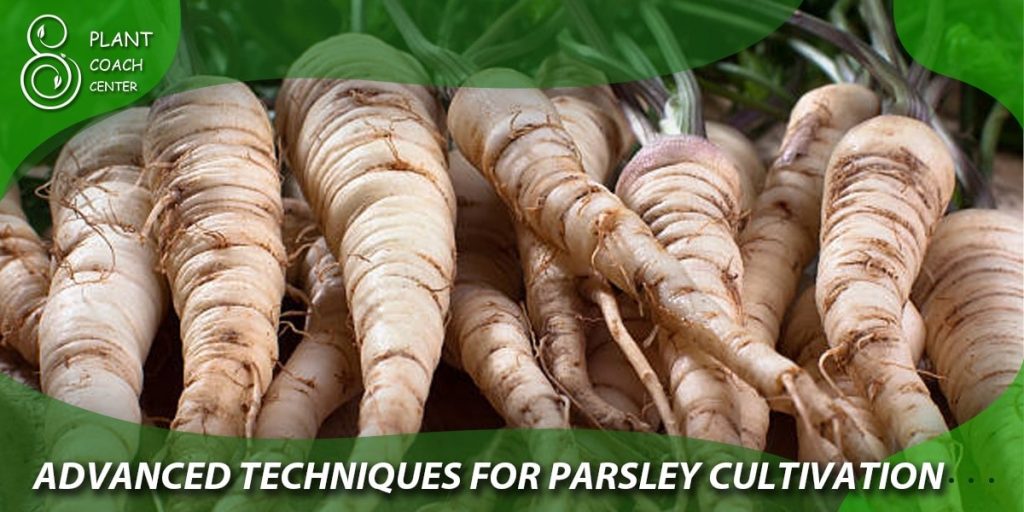
If you’re looking to take your parsley cultivation to the next level, here are some advanced techniques that can enhance plant growth, flavor, and overall success:
Succession Planting
Succession planting involves sowing parsley seeds or transplanting seedlings at regular intervals to ensure a continuous harvest throughout the growing season. By staggering your plantings, you can avoid a glut of parsley at once and enjoy a steady supply over an extended period. Plan your successive plantings based on the average days to maturity and the desired harvest schedule.
Pinching and Harvesting
Pinching or pruning parsley plants can promote bushier growth and increase leaf production. When the plants reach a height of about 6 to 8 inches (15 to 20 cm), use scissors or your fingers to pinch off the top portion of each stem, just above a leaf node. This encourages lateral branching and results in fuller plants with more leaves to harvest.
During harvest, selectively remove outer leaves, starting from the outside of the plant and working your way inward. This allows the inner leaves to continue growing and ensures a continuous supply of fresh parsley throughout the season.
Overwintering Parsley
Parsley is a biennial plant, meaning it has a two-year life cycle. In its second year, it produces flowers and sets seeds. However, you can extend the lifespan of parsley by overwintering it indoors or in a protected environment.
Before the first frost, dig up a few parsley plants from the garden and transplant them into pots or containers. Place them in a cool, well-lit indoor location, such as a sunny windowsill or a cold frame.
During the winter months, provide moderate watering and ensure the plants receive sufficient light. With proper care, parsley can continue to grow and produce fresh leaves, giving you a year-round supply.
Hydroponic or Container Cultivation
Parsley can also be grown hydroponically or in containers, allowing you to cultivate it in limited spaces or areas with poor soil conditions. Hydroponic systems provide a controlled environment, ensuring optimal nutrient availability and water efficiency.
When growing parsley in containers, choose pots with good drainage and use a high-quality potting mix. Place the containers in a sunny location, and water regularly, ensuring the soil remains consistently moist but not waterlogged. Container cultivation gives you the flexibility to move the plants to optimal sun and shade positions as needed.
Seed Saving
If you’d like to save parsley seeds for future plantings, allow the plants to flower and produce seeds in their second year. The flowers will turn into seed heads or umbels containing small, oval-shaped seeds. Allow the seed heads to dry on the plant until they turn brown and the seeds are fully mature.
Harvest the seed heads and store them in a cool, dry place. Once the seeds are completely dry, remove them from the heads and store them in airtight containers. Properly stored parsley seeds can remain viable for several years.
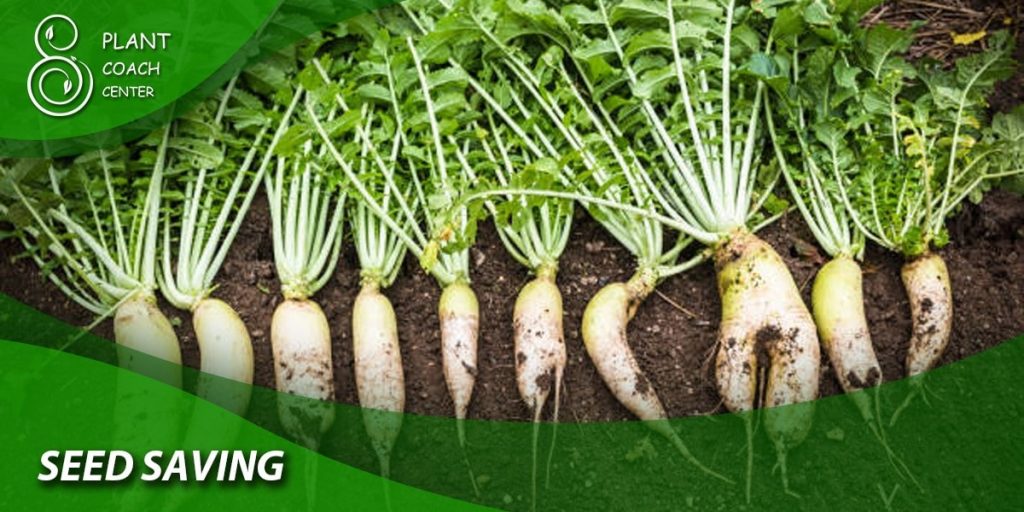
Conclusion
parsley cultivation can be a rewarding and enjoyable experience. By understanding and addressing common problems such as slow germination, bolting, pests, diseases, and nutrient deficiencies, you can ensure the health and productivity of your parsley plants.
Implementing advanced techniques like succession planting, pinching, overwintering, hydroponics or container cultivation, companion planting, regular feeding, seedling transplantation, and preserving parsley can further optimize growth, flavor and overall success.
Whether you’re a beginner or an experienced gardener, incorporating these practices into your parsley cultivation can help you achieve a bountiful harvest and enjoy the fresh taste of this versatile herb year-round. For further information and resources related to plant coaching, you can visit plantcoachcenter.com. Happy gardening!


